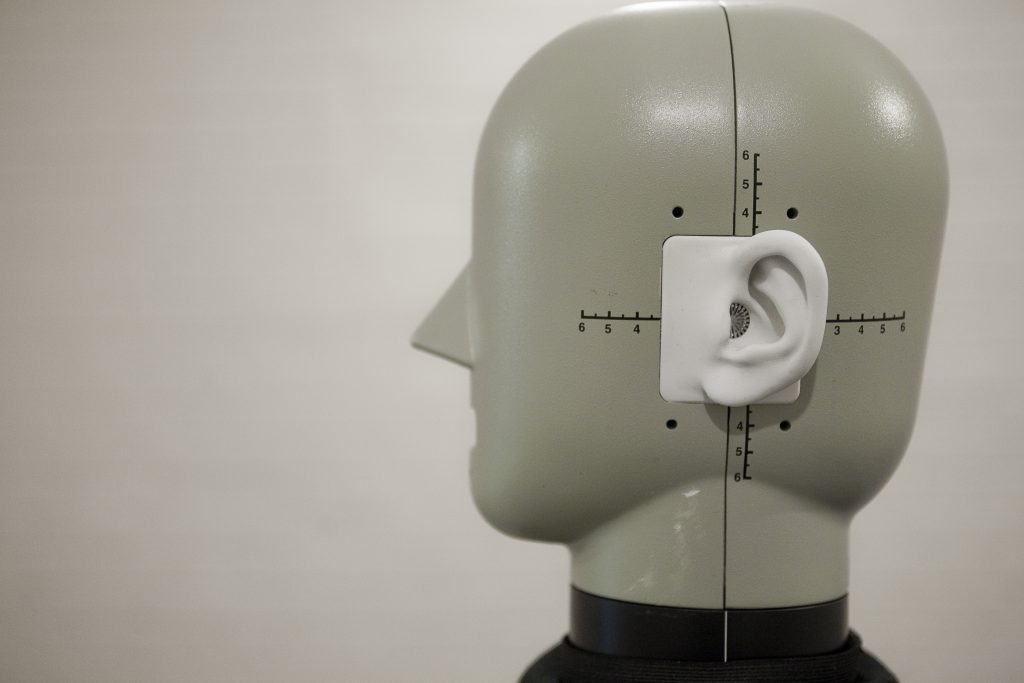Measurement and Modelling
Acoustic measurement
Measurement is fundamental to our research and we are the Designated Institute for Airborne Acoustics Metrology in the UK. We have developed measurement methods in vibroacoustics, architectural and building acoustics, which are now part of international standards. We have world-class laboratories for acoustic measurement. Alongside physical measurement, perceptual testing is a major focus of our research. Find out more about our industrial measurement work from testing to R&D.
Case study: High Intensity Acoustic Testing
Satellite components need to be able to withstand the very high intensity sound waves generated during take off. To check this, components are subjected to very high sound levels (>140 dB) in our test facility. This work is done for the aerospace, space and defense sectors.

Computer modelling
Simulation is fundamental to the understanding sound and designing new methods to manipulate and control sound. The impact of works in this area can be seen in the design of acoustic performance spaces such as concert halls and soundscapes in urban design; the development of advanced acoustic metamaterials; and more effective control of noise from emerging technologies such as EVTOL and drones or relatively new technology at large scale within the UK, such as heat pumps. We work on a wide range of methods including geometrical models, boundary element methods, finite element methods, finite difference methods, parabolic equation methods.
Perceptual measurement
The goal of psychoacoustic meaasurement is to understand how people perceive and experience sound. We use a wide range of methods both quantitative and qualitative. Nowadays, this is often combined with physiological measurement such as EEG. We might want to understand how accurately you can locate a sound source, or we might want to measure the smallest change in sound level you can detect. We can also work at a higher level; for example, we might want to understand the emotional response to sound in your everyday environment, or we might want to evaluate annoyance due to noise pollution. We carry out mainly high-level applied psychoacoustic research aimed at solving practical problems. The results of our research are used in designing better environments, better products and more effective noise regulation.
Contact
For measurement Dr Andy Elliott and modelling Dr Jon Hargreaves.
